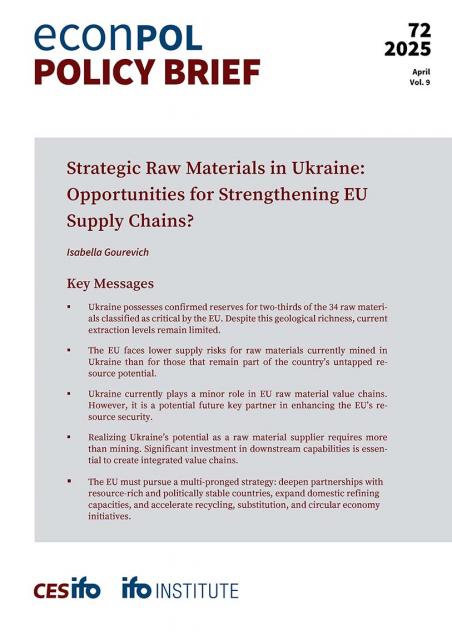Strategic Raw Materials in Ukraine: Opportunities for Strengthening EU Supply Chains?
Key Messages
- Ukraine possesses confirmed reserves for two-thirds of the 34 raw materials classified as critical by the EU. Despite this geological richness, current extraction levels remain limited.
- The EU faces lower supply risks for raw materials currently mined in Ukraine than for those that remain part of the country’s untapped resource potential.
- Ukraine currently plays a minor role in EU raw material value chains. However, it is a potential future key partner in enhancing the EU’s resource security.
- Realizing Ukraine’s potential as a raw material supplier requires more than mining. Significant investment in downstream capabilities is essential to create integrated value chains.
- The EU must pursue a multi-pronged strategy: deepen partnerships with resource-rich and politically stable countries, expand domestic refining capacities, and accelerate recycling, substitution, and circular economy initiatives.
This brief identifies raw materials which Ukraine has reserves for and examines Ukraine’s current role in raw material production and trade. It evaluates current global supply chains as well as EU and German sourcing patterns. Lastly it provides insights into how the EU can integrate Ukrainian resources into its supply chain strategy. A special focus will be on raw materials which are classified as strategic raw materials by the EU (EU Commission, 2023) and which Ukraine has put an emphasis on in its activities on attracting investors. This leads to the following list : Manganese, Titanium Metal, Natural Graphite, Lithium, Cobalt, Copper, Nickel.
Isabella Gourevich: “Strategic Raw Materials in Ukraine: Opportunities for Strengthening EU Supply Chains?,” EconPol Policy Brief 72, April 2025.
